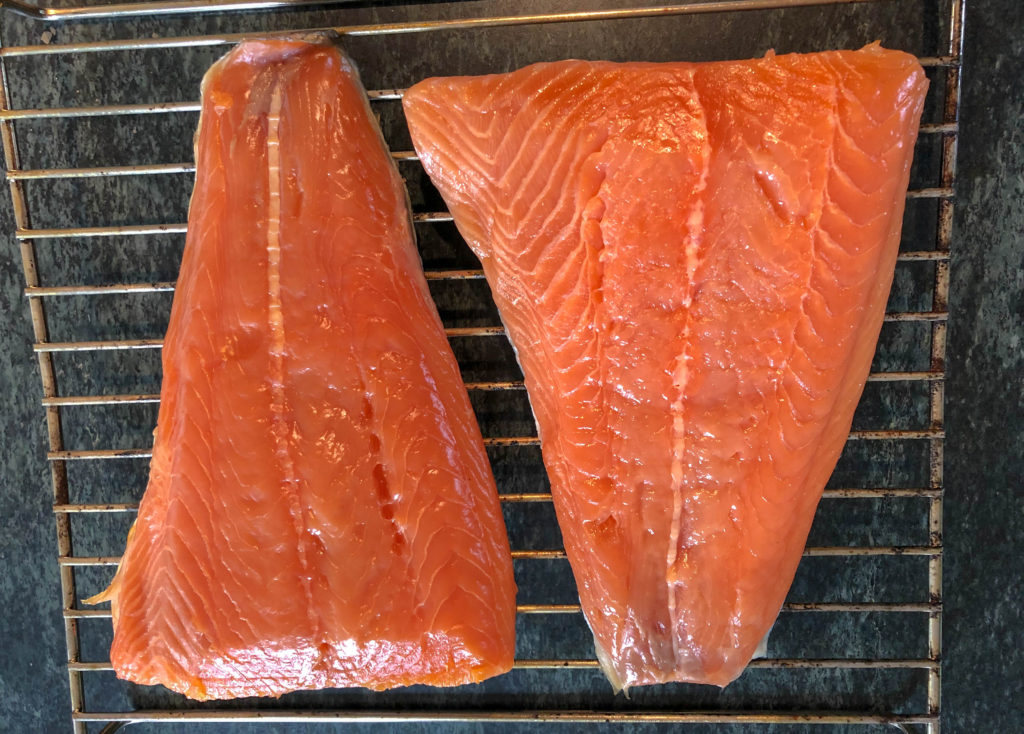
Imagine you’ve caught a lot of gorgeous, fat salmon and there’s only so much of it you can eat in one sitting. Also, you’re a hardened Viking fisherman, you’re standing on a cold beach, and you don’t want to mess around too much with recipes.
How about if you gut and fillet the fish, dig a pit in the sand, add some bark and pine needles, and cover it back up? With a bit of luck it will ferment and turn into the original gravlax, which translates into “buried fish.”
I am definitely going to try that out one day, but as with sushi (which was also originally made with preserved fish), gravlax has become something you can do relatively quickly, and without a beach or a shovel. The key to the whole thing these days is salt and maybe a little pressure, all to get enough water out of the fish so as to concentrate its flavor, and keep it edible beyond its normal span of days.
Gravlax is more process than recipe, and I go through the steps in as much detail as you need and I can stand in this page from our deli chronicles. If you’re a gravlax virgin, about to be salted and squished for the very first time, it’s worth a read. Otherwise, let’s plunge ahead with a few exemplary recipes that you can be eating as soon as 24 hours from now, and even cold smoke into the true lox of your dreams.
My Grandpa Maier’s Gravlax was inspired by the old gentleman himself. He owned a men’s wear shop in Philadelphia and was a great salesman, tailor and pinochle player, as well as a friend of Leon Trotsky’s. He also loved rye whiskey. This is my basic go-to gravlax recipe. It permits of many variations and is a great place to start. For very complete and generic gravlaxing instructions, check out this chronicle. If you want to go the extra mile and cold-smoke the results into the true lox of your dreams (and if you have a galvanized steel trash can handy) try this link.
